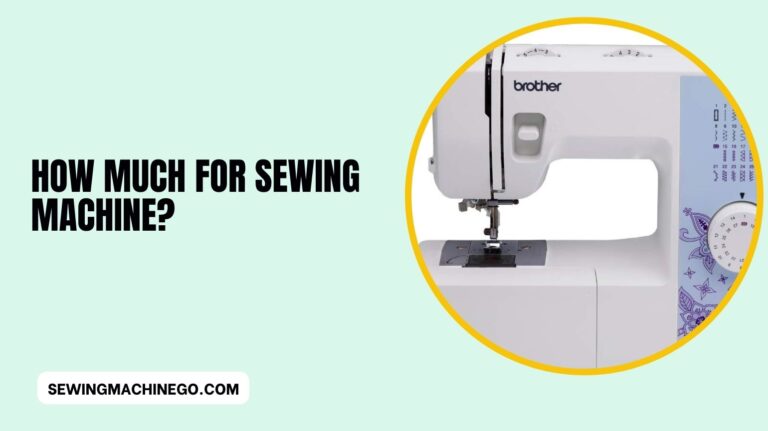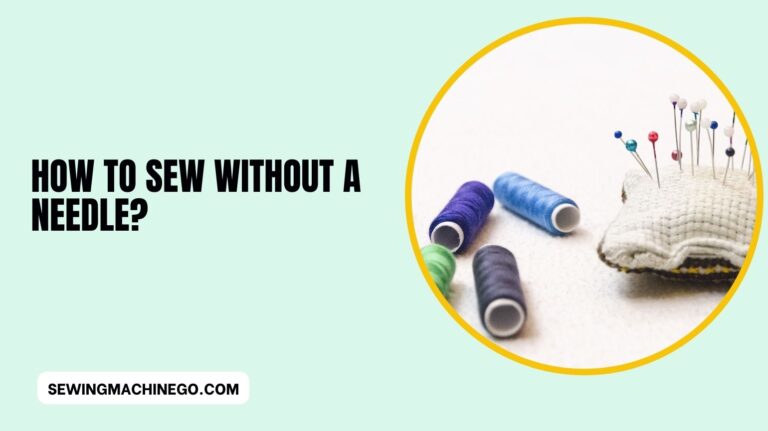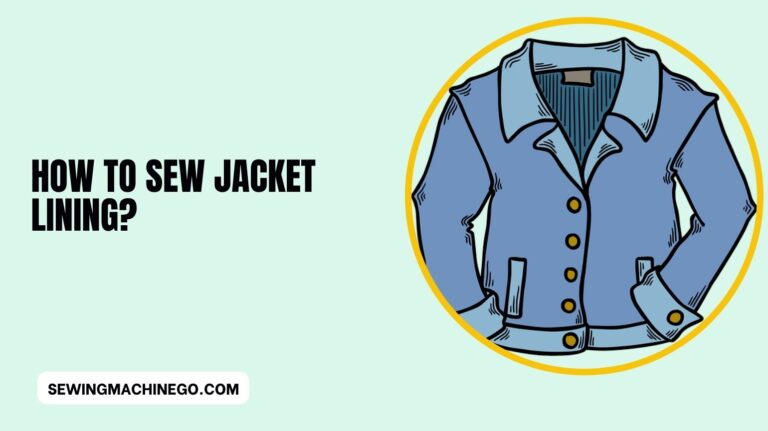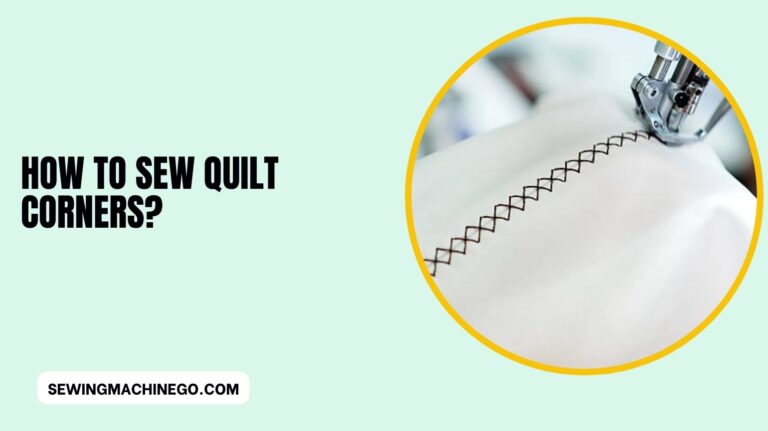How to Sew Elastic Thread? (Understanding Sewing Guide) 2024
Embarking on the journey of sewing with elastic thread opens up a world of possibilities for creating comfortable, stretchy garments and decorative stitching.
How to Sew Elastic Thread? Mastering the technique of sewing with elastic thread introduces a new dimension to your sewing repertoire, allowing you to add elasticity and flair to your projects.
With a few fundamental steps and a bit of practice, you’ll soon be adept at working wonders with elastic thread.

How to Sew Elastic Thread?
Sewing with elastic thread can add stretch and versatility to your projects. Here’s a quick guide:
- Thread and Needle: Use a sewing machine with a bobbin wound with elastic thread. You’ll need a regular thread in the needle. Ensure you have a needle suitable for stretch fabrics.
- Tension Adjustment: Loosen the tension on your sewing machine. Test on a scrap fabric to find the right balance between the regular thread and the elastic thread’s tension.
- Wind Bobbin Carefully: Wind the bobbin with elastic thread by hand, not too tight or too loose. This helps prevent breakage and ensures smooth sewing.
- Stitch Selection: Choose a stitch suitable for elastic materials, like a stretch or zigzag stitch. This allows the fabric to maintain its stretch.
- Start Sewing: Begin sewing slowly, guiding the fabric with both hands to prevent bunching or stretching. Keep an even pace to maintain consistent tension.
- Practice Control: Control is key. Ensure the elastic thread doesn’t get tangled or pulled too tightly while sewing. Adjust tension or stitch length if needed.
- Experiment: Practice on scrap fabric to get comfortable with the elastic thread before starting your actual project. Adjustments might be necessary based on the fabric and desired elasticity.
With patience and practice, sewing with elastic thread can become a valuable skill, adding comfort and flexibility to your creations.
Understanding Elastic Thread
Here are the Understanding Elastic Thread:
What is Elastic Thread?
Elastic thread is a specialized sewing material designed with stretchable properties. Composed of rubber or a combination of rubber and other materials, it allows the fabric to gather or stretch when sewn, imparting elasticity to the stitches.
Types of Elastic Threads
There are various types of elastic threads available, differing in thickness, stretchability, and material composition. Some common types include polyester elastic thread, cotton-covered elastic thread, and clear elastic thread.
- Polyester Elastic Threads: Known for their durability and resistance to moisture and chemicals, polyester elastic threads offer good elasticity and strength, making them suitable for various sewing projects.
- Nylon Elastic Threads: These threads are highly resilient and possess excellent elasticity. They are commonly used in swimwear, lingerie, and sportswear due to their ability to withstand frequent stretching.
- Spandex-Based Elastic Threads: Spandex threads provide exceptional stretch and recovery properties, making them ideal for garments that require high flexibility, such as activewear and form-fitting clothing items.
Each type of elastic thread has distinct characteristics that cater to different sewing needs and fabric types.
Tools and Materials Required
Before starting a project involving elastic thread, gather the necessary tools and materials. These may include a sewing machine, elastic thread, fabric, needles suitable for elastic thread, scissors, and a measuring tape.
Preparing Your Sewing Machine
Properly prepare your sewing machine for working with elastic thread. Begin by cleaning the machine and ensuring it is in good working condition. Adjust the tension settings and choose the appropriate needle for the elastic thread.
Threading the Machine with Elastic Thread
Threading the sewing machine with elastic thread requires a different approach than regular thread. Follow the machine’s manual for guidance on correctly threading the elastic thread to prevent any tangling or breakage during sewing.
Adjusting Tension and Stitch Length
The correct tension and stitch length are crucial when sewing with elastic thread. Experiment with different tension settings to achieve the desired stretch and gather in the fabric without compromising the stitch quality.
Sewing Techniques with Elastic Thread
Here are the Sewing Techniques with Elastic Thread:
Shirring
Shirring involves creating gathered, elasticized sections in fabric. Learn the technique of evenly spaced rows of stitches with elastic thread to achieve beautiful shirred designs.
Smocking
Smocking is a decorative stitching technique that gathers fabric in a patterned design. Mastering the use of elastic thread enables you to create intricate smocked patterns on garments or home decor items.
Gathering
Elastic thread is also used for gathering fabric, providing a convenient method to create fullness or ruffles in clothing or crafts.
Troubleshooting Common Issues
Encountering issues while sewing with elastic thread is common. Learn how to troubleshoot problems like thread breakage, improper tension, or uneven gathering for a smoother sewing experience.
- Thread Tension Problems:
- Symptoms: Uneven gathers or puckering loose stitches, or thread breaking.
- Solution: Adjust the tension settings on your sewing machine. Test on a scrap fabric to find the right balance between the regular thread and elastic thread tension.
- Elastic Breakage:
- Symptoms: Elastic thread snapping or breaking during sewing.
- Solution: Ensure you’re using a suitable needle size for elastic threads. A smaller needle prevents strain on the elastic. Also, verify the thread quality and replace it if it’s worn or old.
- Thread Tangling:
- Symptoms: Elastic thread getting tangled or bunched up while sewing.
- Solution: Wind the elastic thread onto the bobbin carefully and evenly. Avoid overloading the bobbin, as excessive thread can cause tangling.
- Inconsistent Elasticity:
- Symptoms: Uneven or inconsistent stretch in the fabric.
- Solution: Check the quality of the elastic thread. Lower-quality threads may have inconsistent elasticity. Additionally, ensure proper tension and avoid pulling the fabric excessively while sewing.
- Machine Compatibility Issues:
- Symptoms: Elastic thread not working well with your sewing machine.
- Solution: Some sewing machines may handle elastic threads better than others. Experiment with different machine settings or consider using a machine specifically designed for elastic thread work.
Troubleshooting these issues methodically can help ensure a smoother sewing experience with elastic threads.
Care and Maintenance Tips
After completing a project, it’s essential to care for your sewing machine and elastic thread. Clean the machine regularly, store the thread properly, and handle it carefully to ensure its longevity.
- Gentle Washing: When using garments or items with elastic thread, opt for gentle washing cycles. Avoid high temperatures and harsh detergents, as they can weaken the elastic fibers over time.
- Avoid High Heat: Refrain from using high-heat settings while ironing or drying elastic-threaded fabrics. Excessive heat can damage the elasticity of the threads, leading to reduced stretch.
- Proper Storage: Store your elastic threads in a cool, dry place away from direct sunlight. This helps maintain their elasticity and prevents them from deteriorating prematurely.
- Avoid Overstretching: While sewing or handling elastic-threaded garments, avoid excessive pulling or stretching, as it can strain the elastic fibers, leading to loss of elasticity.
- Careful Handling: Handle items with elastic threads gently to prevent unnecessary stress on the threads. Be cautious when pulling or manipulating the fabric to avoid breakage or damage.
- Replace When Necessary: Elastic threads, like any other sewing material, wear out over time. If you notice a loss of elasticity or signs of wear, consider replacing the elastic thread for optimal results.
By following these care and maintenance tips, you can prolong the life of elastic threads and ensure their effectiveness in your sewing projects.
Advantages and Applications of Sewing with Elastic Thread
Discover the advantages of using elastic thread in sewing projects. From creating comfortable and flexible clothing to adding unique design elements, elastic thread offers versatility in various applications.
- Stretch and Flexibility: Elastic thread allows fabrics to stretch, providing comfort and flexibility in garments, particularly in areas like cuffs, waistbands, or gathering on clothing.
- Ease of Use: It’s relatively easy to work with elastic thread, requiring minimal specialized equipment or skills. Basic sewing machines can accommodate elastic thread, making it accessible for various sewing enthusiasts.
- Creates Textured Designs: Sewing with elastic thread enables the creation of gathered or shirred designs, adding texture and visual interest to garments, home decor, and accessories.
- Functional and Decorative: Elastic threads serve both functional and decorative purposes. They secure fabrics while adding aesthetic appeal, making them suitable for both practical clothing and embellishing projects.
- Enhances Comfort: Elastic thread enhances the comfort of garments by allowing them to adjust to body movements, providing a better fit and ease of wear.
People also ask
Can you sew with elastic thread on a sewing machine?
Yes, you can sew with elastic thread on a sewing machine. It’s often used for shirring or creating elasticized areas in garments.
To do this, wind the elastic thread onto the bobbin by hand, adjust the machine’s tension settings, and sew as you would with regular thread.
The elastic thread creates gathers or stretches in the fabric as you sew. Adjusting tension might be necessary to achieve the desired elasticity and appearance.
Can you hand sew elastic thread?
Hand sewing with elastic thread is possible but can be challenging. Elastic thread is often used in shirring or gathering fabric for elasticity.
To hand sew with elastic thread, use a large needle and sew with long, evenly spaced stitches through the fabric, pulling gently to create the desired gathers.
It might take some practice to get the tension and spacing right for the desired effect.
What stitch do you use when sewing elastic?
When sewing elastic, a common stitch used is the zigzag stitch on a sewing machine. This stitch provides flexibility and allows the elastic to stretch without breaking the stitches.
For hand-sewing elastic, a stretch stitch or a simple running stitch can be used to secure the elastic while still allowing it to stretch.
Do you need a special needle for the elastic thread?
Using a specific needle designed for elastic thread isn’t mandatory, but a larger needle like a hand sewing needle or a needle with a larger eye can be more accommodating for threading elastic thread.
The larger eye helps prevent the elastic thread from fraying or breaking while threading it through the needle.
Conclusion
In conclusion, sewing with elastic thread is a versatile skill that adds flexibility and stretch to your projects.
Remember to adjust your machine’s tension, use the right needle, and practice on scrap fabric to achieve the perfect tension.
With patience and practice, mastering the art of sewing with elastic thread can elevate your sewing projects, offering comfort and style in equal measure.

Hi, I am Alice, and I am your perfect guide to the world of sewing machines. With over 10 years of experience in the sewing industry, I am passionate about sharing my knowledge and expertise to help you make the most of your sewing journey. about me





